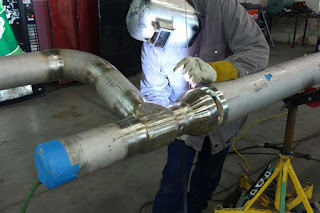Pressure vessels come in many shapes and sizes and serve many different purposes. They are primarily used in manufacturing industries as well as for various scientific experiments and analysis. Some of the main types of pressure vessels include:
Water tanks are used in the field of energy, wastewater treatment, and other such applications. Water tanks are usually used as storage tanks for water that is needed for a certain purpose. This may be for industrial use or for domestic use. Water tanks also serve as pressurized storage tanks for water that is needed for industrial use.
There are two main types of pressure vessels; the ones that contain liquids and those that do not. The types of pressure vessels that contain liquids usually have a pump, a storage tank, and an automatic control mechanism. These are commonly used in chemical laboratories and as the primary storage tanks for chemicals.
Gas tanks are used in industries and chemical labs as the main storage vessels for gas. These types of tanks also use pumps, storage tanks, and other mechanical components. These tanks are typically made of steel or other sturdy materials because these tanks can also contain poisonous gases.
Other types of pressure vessels include oil and gas pressure tanks, refrigeration systems, and sewage disposal units. The types of pumps used in these tanks vary depending on the type of water that is stored inside them. They also differ depending on their size, and the efficiency of their pump. These pumps are usually controlled electronically and can perform different functions such as controlling water temperature, air pressure, or the flow of liquid.
These are the various different types of pressure vessels available for different applications. As you can see, they have many uses and are useful for various purposes. Whatever the purpose, you will definitely find the right vessel that suits your requirements and needs.
With so many different types of pressure vessels in the market, it's important that you shop around to get the best one for your needs. You may want to consult experts in the industry before making a final decision as to what type of pressure vessel you should buy.
Pressure vessels can be used in different applications, and they come in different shapes, sizes, and colors. You can easily find pressure vessels by searching for them online, in local stores, in catalogs, or even at home-departmental stores.
You can even find pressure vessels on sale if you visit the local pet stores or departmental stores, especially if there are sales promotions going on. When you are looking for the right vessel, remember to purchase them from stores that have plenty of products.
View more here: Promec Engineering Pty Ltd































